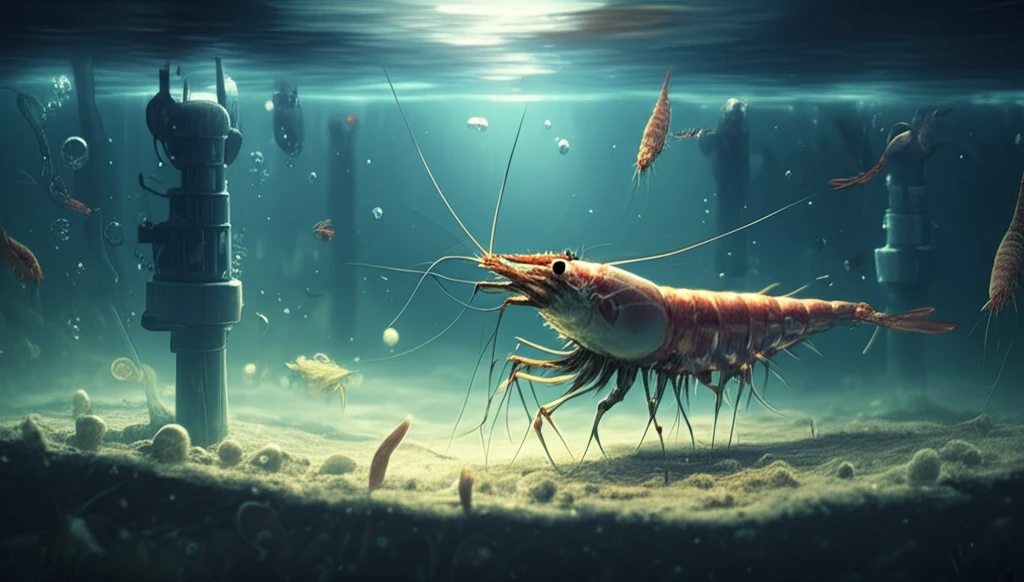
Shrimp Farming Revolution: How Smart Feeding Strategies Boost Yields and Protect Our Waters
"Discover how advanced feeding techniques in shrimp aquaculture, focusing on C/N ratios and biofloc systems, are key to sustainable and profitable farming."
Aquaculture, particularly shrimp farming, faces the ongoing challenge of balancing productivity with environmental responsibility. As global demand for seafood rises, intensive farming practices often lead to water pollution, disease outbreaks, and habitat degradation. But what if we could revolutionize shrimp farming to be both highly productive and environmentally sustainable? Recent research points to innovative feeding strategies as a key solution.
The Pacific white shrimp (Litopenaeus vannamei) is a cornerstone of the aquaculture industry, cultivated worldwide. Traditional intensive farming methods, however, strain ecosystems through high water exchange and effluent discharge. Biofloc technology (BFT), which creates a natural, self-sustaining ecosystem within the farming tanks, offers a promising alternative. This approach reduces water usage and minimizes waste, but it requires a precise understanding of nutrient management, especially concerning carbon to nitrogen (C/N) ratios.
This article delves into groundbreaking research exploring the impact of different commercial feeds and C/N ratios on water quality and shrimp performance in biofloc-based systems. By understanding and implementing these advanced feeding strategies, farmers can achieve higher yields, healthier shrimp, and a significantly reduced environmental footprint.
Optimizing Carbon to Nitrogen (C/N) Ratios for Thriving Bioflocs

The heart of sustainable shrimp farming lies in maintaining a balanced ecosystem within the biofloc. Bioflocs are complex communities of microorganisms, algae, and organic matter that naturally develop in aquaculture systems. These communities not only purify the water by consuming waste products like ammonia and nitrite but also serve as a supplemental food source for the shrimp. The key to a thriving biofloc is the carbon to nitrogen (C/N) ratio. This ratio determines the balance between heterotrophic bacteria, which consume organic carbon and nitrogen, and autotrophic organisms, which use inorganic carbon.
- Enhanced Water Quality: A balanced C/N ratio promotes the efficient conversion of waste, leading to cleaner water.
- Improved Shrimp Performance: Optimal C/N ratios support better growth rates and overall health.
- Cost-Effective Solutions: Strategic adjustments to C/N ratios can reduce input costs, such as molasses and sodium bicarbonate.
The Future of Shrimp Farming: Sustainable, Profitable, and Environmentally Conscious
The research clearly demonstrates that optimizing feeding strategies, particularly C/N ratios, is crucial for the future of sustainable shrimp farming. By adopting biofloc technology and carefully managing nutrient inputs, farmers can significantly reduce their environmental impact while improving productivity and profitability. While more research is needed to evaluate the practicality of SI-35 feed and HI-35 feed for Litopenaeus vannamei grow-out in biofloc-based, zero-exchange systems, this study provides a pathway toward a more sustainable and responsible aquaculture industry.
